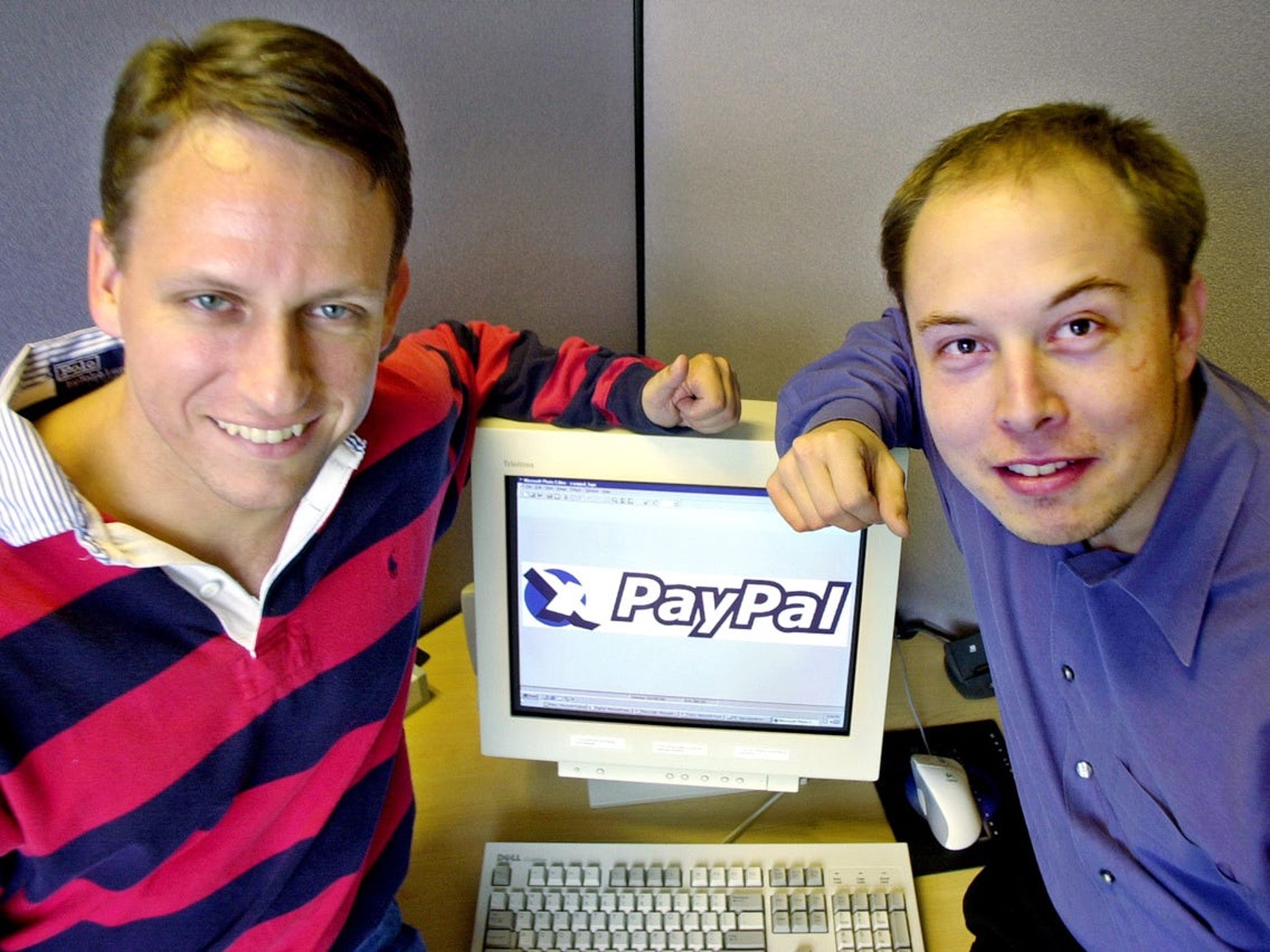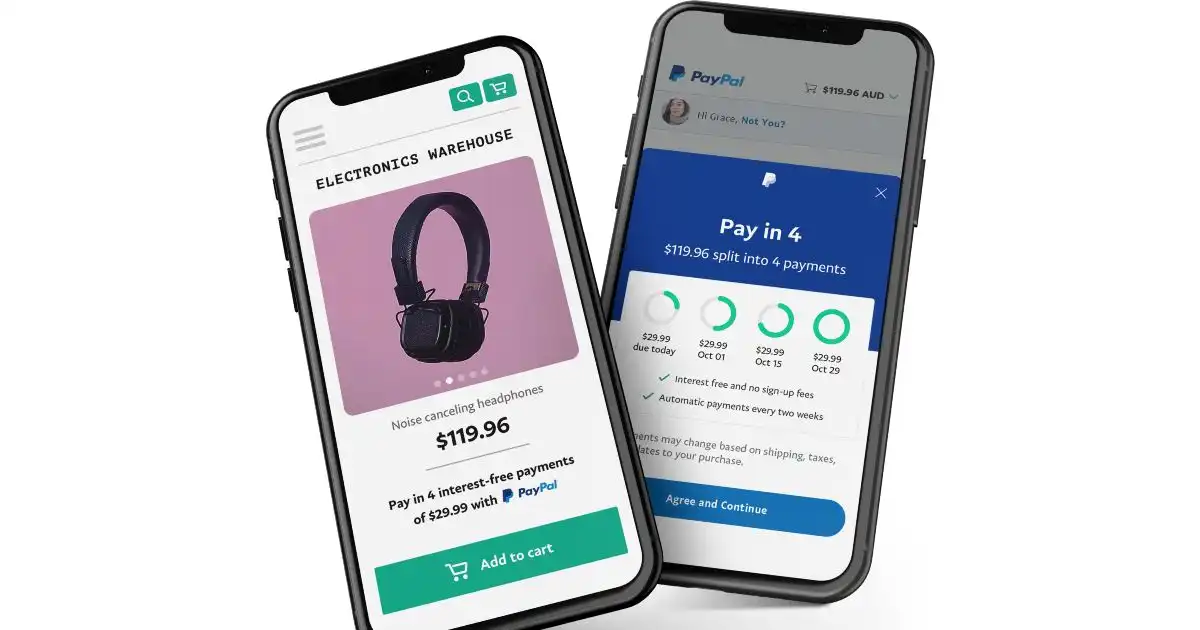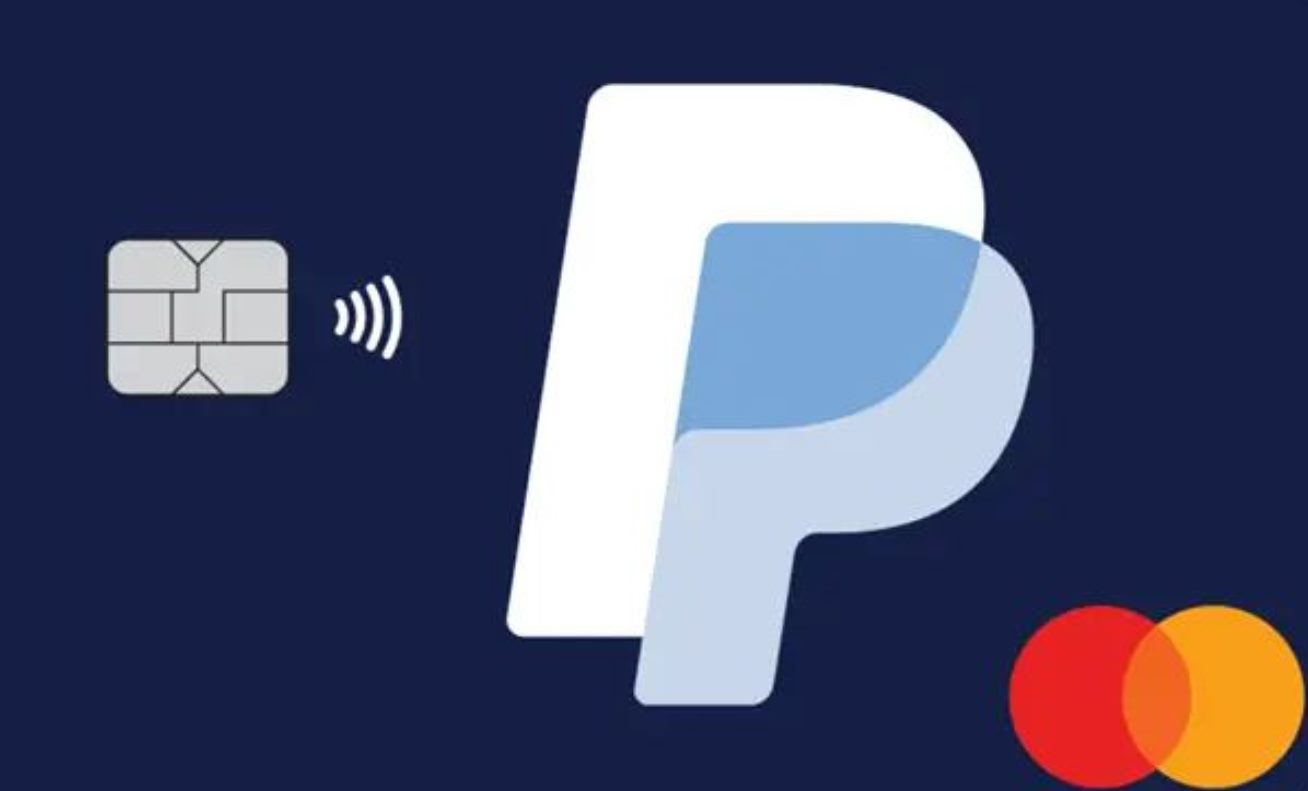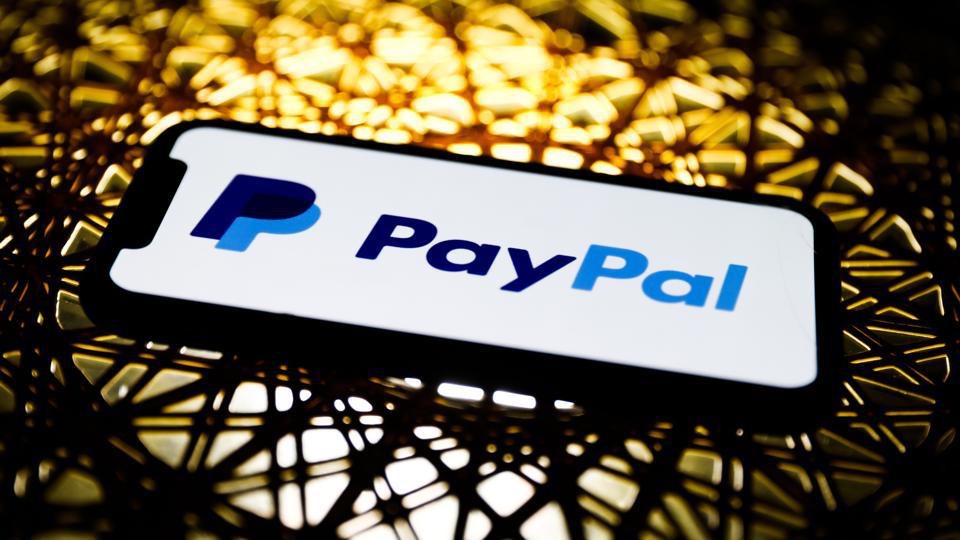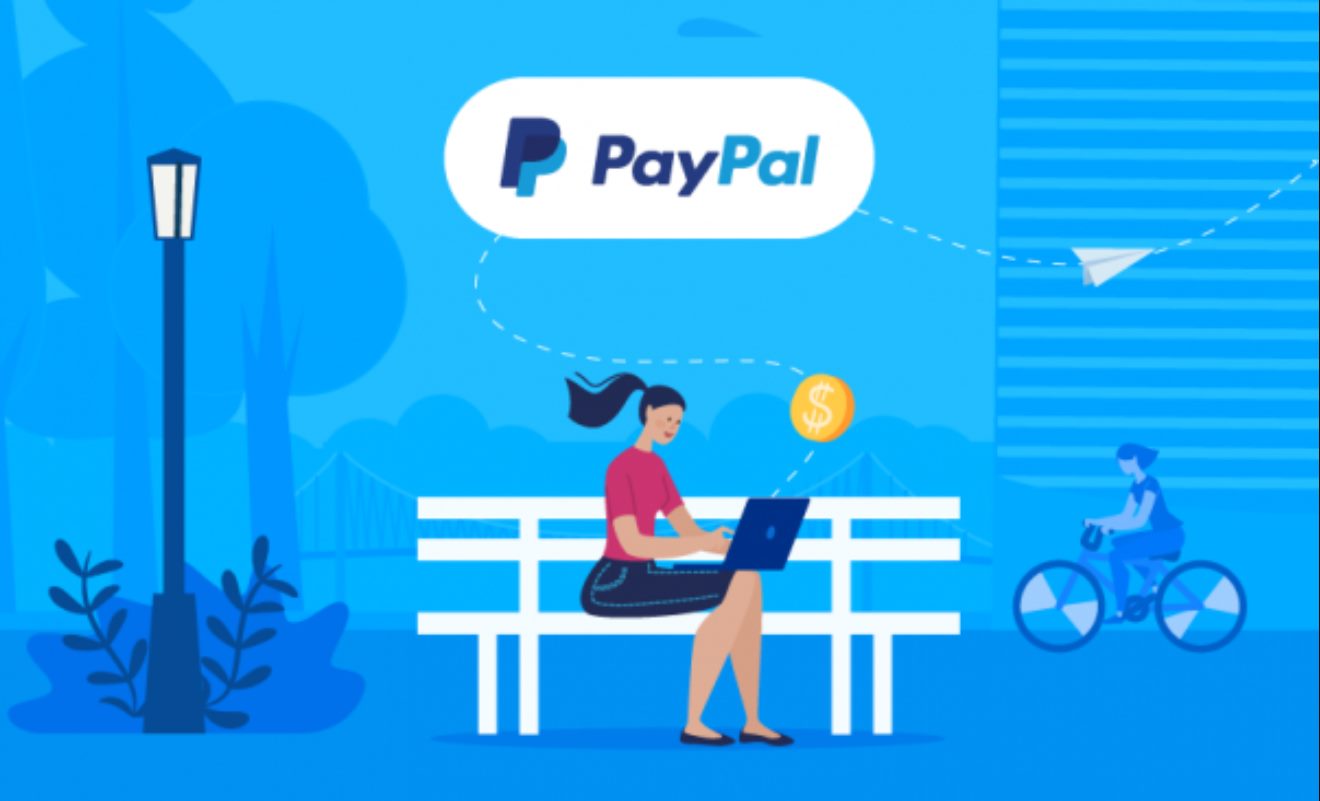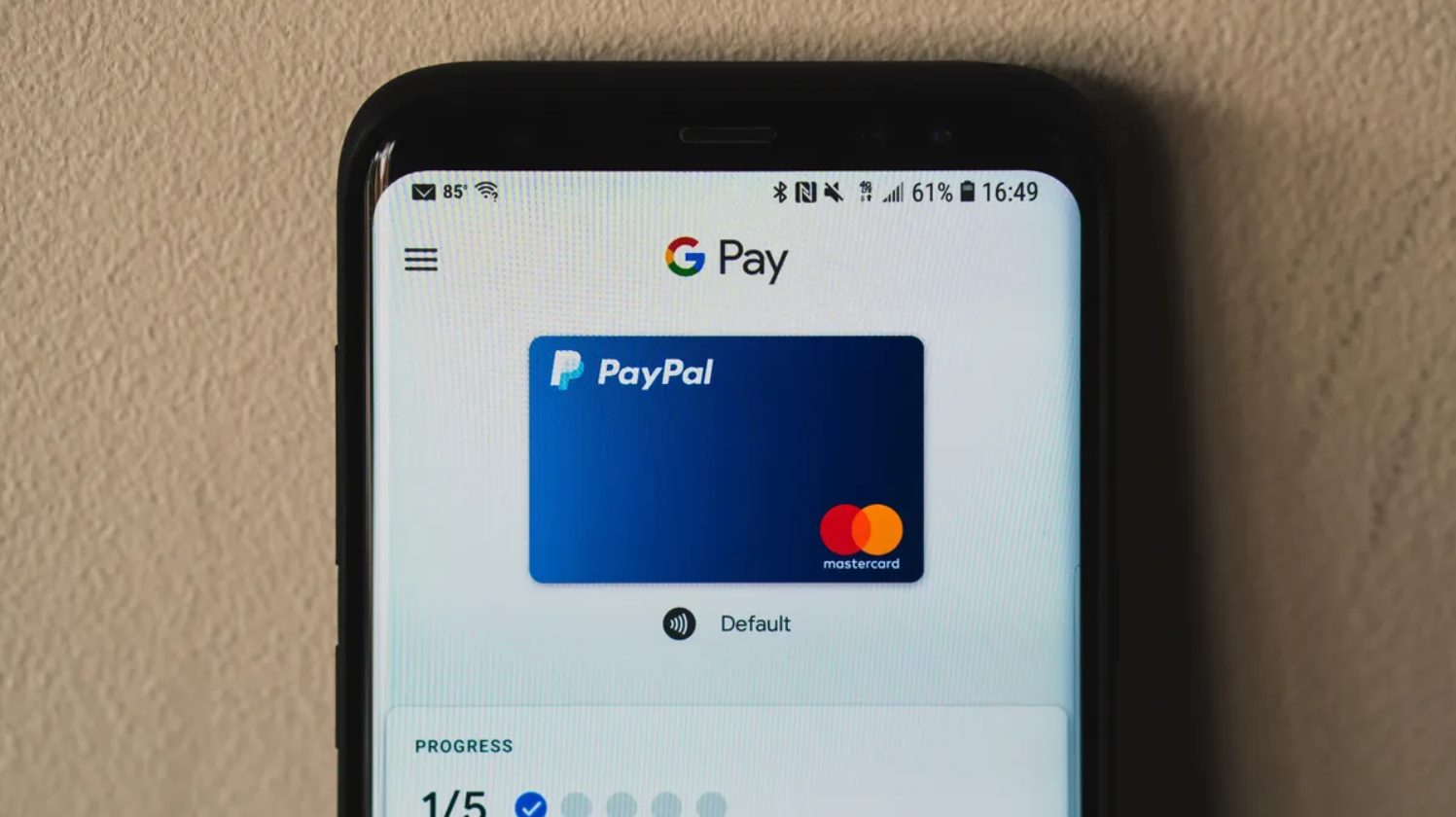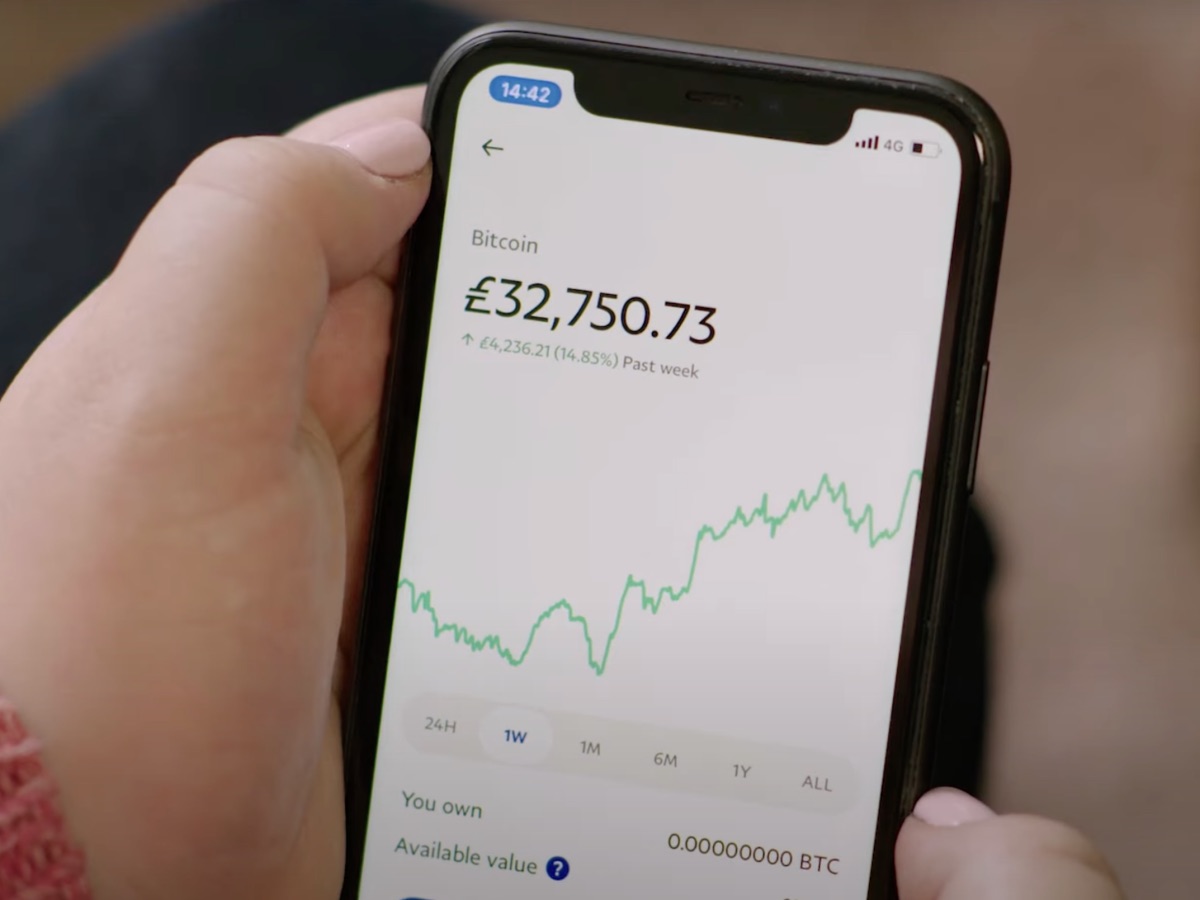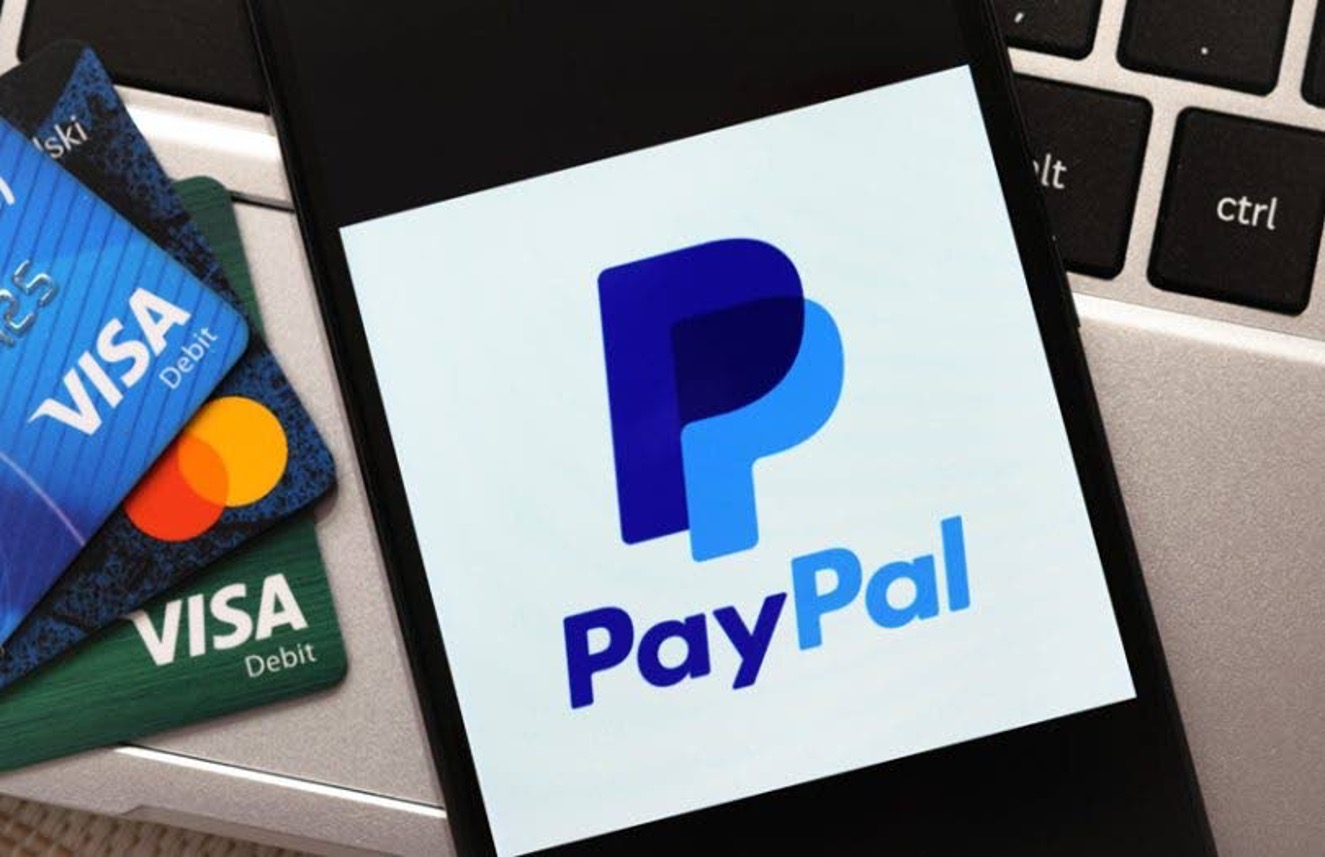Early Beginnings
The story of PayPal began in the late 1990s, a time when e-commerce was still in its infancy. It all started with two innovative individuals, Max Levchin and Peter Thiel. Levchin, a talented coder, had a fascination with cryptography and was known for his expertise in cybersecurity. Thiel, on the other hand, was a visionary entrepreneur with a keen interest in the potential of online payments.
In 1998, Levchin and Thiel joined forces to establish a company called Confinity. Initially, Confinity’s main focus was on developing security software for handheld devices. However, they soon realized the enormous potential of creating a digital wallet that would enable secure online transactions.
Confinity’s breakthrough came with the development of software that allowed users to transfer money between Palm Pilots, which were popular mobile devices at the time. This software laid the foundation for what would later become PayPal.
Recognizing the potential for growth, Confinity merged with another emerging company called X.com, founded by a visionary entrepreneur named Elon Musk. X.com was primarily focused on online banking services, but Musk saw the potential in combining forces and transforming the company into something even more significant.
The fusion of Confinity and X.com was a pivotal moment in the history of PayPal. The newly-formed company started to shift its focus towards creating a seamless online payment system that would revolutionize the way people transacted on the internet.
Despite conflicts within the executive team at X.com, Musk’s insistence on prioritizing the development of the online payment service led to the decision to rename the company as PayPal in the year 2000. The name “PayPal” was chosen for its simplicity, memorable sound, and global appeal, reflecting the company’s ambition to become a leading player in the international payments industry.
With a new name and a clear vision, PayPal took its first steps towards shaping the online payments landscape. The innovative platform aimed to make sending and receiving money online faster, safer, and more convenient. This approach caught the attention of venture capitalists, who saw the value and potential of PayPal’s revolutionary solution.
Next, we will explore how PayPal gained rapid growth and success in the following section.
Launching of Confinity
In 1998, Confinity was founded by Max Levchin, Peter Thiel, and Luke Nosek with the initial goal of developing software for secure mobile transactions. The trio recognized the increasing need for secure digital transactions and sought to create a solution that would revolutionize the way people conducted business online.
Confinity’s first venture was creating software to facilitate money transfers between handheld devices, specifically Palm Pilots. The innovative software allowed users to securely transfer funds directly from one device to another, eliminating the need for physical cash or traditional banking systems.
The success of their initial project laid the foundation for what would eventually become PayPal. The ability to transfer funds digitally sparked the founders’ curiosity about the potential of creating a comprehensive online payment system.
As Confinity continued to refine its technology, it attracted the attention of the online banking industry. One of the most prominent figures to take notice was Elon Musk, the visionary entrepreneur who had founded X.com, an online banking and financial services company. Seeing the immense potential in Confinity’s technology, Musk initiated discussions that eventually led to the merger of the two companies.
This merger marked an important milestone in the evolution of Confinity. By joining forces with X.com, Confinity gained access to a broader set of resources and expertise in the financial sector. The collaboration allowed the company to expand its vision beyond secure mobile transactions and towards building a comprehensive online payment system.
Additionally, the merger brought together a team of talented individuals who shared the same passion for innovation and disruptive technologies. Led by Max Levchin and Elon Musk, the newly-formed company set out to create a groundbreaking platform that would transform the way people transacted online.
With the launch of Confinity, the founders embarked on a journey that would see their company evolve from a small tech startup into a global leader in the digital payments industry. Through their unwavering commitment to innovation and a deep understanding of the needs of online consumers, Confinity laid the groundwork for what would become PayPal.
Coming up next, we will explore the merger between Confinity and X.com and how it shaped the future of PayPal.
Merger with X.com
After gaining traction in the online payment space, Confinity caught the attention of Elon Musk, the founder of X.com. Musk recognized the potential of merging his online banking and financial services company with Confinity to create a robust and comprehensive online payment platform.
In early 2000, negotiations between Confinity and X.com began, leading to an agreement to join forces. The merger between the two entities was a turning point for both companies and set the stage for the birth of PayPal.
Elon Musk saw the value in Confinity’s technological expertise and its vision for reimagining online transactions. He believed that merging with Confinity would enhance the capabilities of X.com and allow them to develop a secure and user-friendly online payment system.
Alongside the merger, Elon Musk advocated for the company to focus more on online payment services rather than traditional banking. This shift in direction was a strategic move towards tapping into the growing demand for digital transactions and positioning the company as a leader in the online payment industry.
As part of the merger, the renamed X.com brought on board Max Levchin as the Chief Technology Officer, further strengthening the leadership team with his technical expertise, strategic thinking, and passion for innovation.
With the merger complete, the newly-formed company set out on an ambitious mission to create a highly secure, efficient, and user-friendly online payment system that would revolutionize e-commerce. They sought to address the complexities and shortcomings of existing payment methods, paving the way for a seamless and universally accessible solution.
Under Elon Musk’s guidance and with Max Levchin’s technical prowess, X.com (soon-to-be PayPal) embarked on a period of rapid innovation and development. The team worked tirelessly to refine the technology, enhance security measures, and design an intuitive user interface.
This focus on technological advancements and customer-centric design would become the foundation of PayPal’s success. The merger brought together the best of both companies, combining Confinity’s expertise in secure mobile transactions with X.com’s financial and banking infrastructure.
As we delve further into the birth of PayPal, we will explore how this merger propelled the company towards becoming the global leader in online payments.
The Birth of PayPal
With the merger of Confinity and X.com complete, the newly-formed company focused its efforts on creating a revolutionary online payment system. Recognizing the need for a simple, secure, and seamless online payment solution, PayPal was born.
The vision of PayPal was to provide individuals and businesses with a convenient and trusted platform to send and receive money electronically. By leveraging the power of the internet, PayPal aimed to democratize financial transactions and eliminate the barriers imposed by traditional banking systems.
At its core, PayPal sought to address the limitations of existing payment methods. Traditional methods, such as paper checks and wire transfers, were time-consuming, expensive, and prone to security risks. PayPal’s founders aimed to create a method that was not only more efficient but also more accessible to individuals around the world.
One of the key features that set PayPal apart was its ability to link directly to a user’s bank account or credit card. This innovation eliminated the need for users to manually enter payment information for every transaction, making the process faster and more convenient.
Furthermore, PayPal’s focus on security was paramount. The company invested heavily in state-of-the-art encryption technology and fraud detection systems to provide users with peace of mind when conducting online transactions. This emphasis on security played a crucial role in building trust among users and establishing PayPal as a reliable and secure payment platform.
By the end of 2000, PayPal had gained significant traction and had already processed over a million transactions per day. The company’s rapid growth and increasing popularity attracted the attention of venture capitalists, leading to substantial investments and further fueling its expansion.
The birth of PayPal marked a major milestone in the evolution of online payments. The company’s disruptive approach challenged the status quo and introduced a new era of digital financial transactions. With its user-friendly interface, innovative features, and commitment to security, PayPal quickly became the payment method of choice for millions of individuals and businesses worldwide.
As we delve deeper into PayPal’s journey, we will explore its rapid growth and the factors that contributed to its extraordinary success.
Rapid Growth and Success
Following its launch, PayPal experienced an unprecedented period of rapid growth and success. The company’s innovative approach to online payments, coupled with a strong focus on user experience and security, solidified its position as a leader in the industry.
One of the key factors contributing to PayPal’s rapid growth was its ability to cater to the needs of both individuals and businesses. Individuals saw PayPal as a convenient and secure method to send and receive money, while businesses recognized the value of accepting PayPal as a payment option, tapping into a vast user base and enhancing customer trust.
As e-commerce continued to gain traction, PayPal became the go-to payment method for online transactions. The company’s seamless integration into e-commerce platforms, coupled with its buyer and seller protection policies, gave users confidence and peace of mind when conducting online transactions.
In addition to its popularity in the e-commerce space, PayPal also benefited from strategic partnerships and innovative collaborations. For instance, PayPal partnered with eBay, the world’s largest online marketplace, to become its primary payment method. This integration further fueled PayPal’s growth, as eBay users embraced the convenience and security offered by PayPal for their transactions. The partnership also helped propel eBay’s growth, as PayPal provided a seamless payment experience for millions of eBay buyers and sellers.
Furthermore, PayPal expanded its services beyond just online payments. The company introduced features such as PayPal Credit, a digital revolving credit line, allowing users to make purchases and pay over time. This offering provided flexibility for customers and further solidified PayPal’s position as a comprehensive financial services provider.
With its growing user base, strategic partnerships, and expanding range of services, PayPal quickly became a household name synonymous with online payments. By 2002, PayPal had over 20 million active user accounts, firmly establishing itself as the leading online payment platform.
In recognition of its rapid growth and success, eBay acquired PayPal in 2002 for $1.5 billion. This acquisition further accelerated PayPal’s expansion and provided the company with additional resources and global reach.
As we continue to explore PayPal’s journey, we will delve into the next phase of its development – going public.
Going Public
After experiencing remarkable growth and establishing itself as the dominant online payment platform, PayPal made a milestone decision to go public. In February 2002, the company embarked on its initial public offering (IPO) and listed its shares on the NASDAQ stock exchange under the ticker symbol “PYPL.”
The decision to go public marked a significant milestone in PayPal’s journey. By becoming a publicly traded company, PayPal gained access to a broader investor base, allowing it to raise capital for expansion and fuel further innovation.
The IPO was a resounding success, with PayPal’s shares soaring on their first day of trading. Investors were captivated by the company’s strong growth trajectory, its position as the market leader in online payments, and its potential to capitalize on the increasing digitization of the global economy.
Going public not only provided PayPal with a significant influx of capital but also increased its visibility and credibility in the financial markets. This newfound status as a public company further solidified PayPal’s position as a trusted financial intermediary, instilling confidence in both users and business partners.
As a publicly traded company, PayPal continued to innovate and expand its offerings. It introduced a range of new services, such as PayPal Mobile, which allowed users to make payments using their mobile devices, and PayPal Here, a mobile card reader that enabled small businesses to accept credit card payments. These innovations kept PayPal at the forefront of the evolving payment landscape.
Furthermore, PayPal leveraged its financial strength to pursue strategic acquisitions and partnerships. Notable acquisitions included the purchase of online payment gateways Braintree and Venmo, expanding PayPal’s market reach and aligning with emerging payment trends.
The visibility and financial resources gained from going public propelled PayPal to new heights. The company became a trusted name not just in online payments but also as a leader in the broader financial technology (fintech) industry.
Soon after going public, PayPal became a subsidiary of eBay, further enhancing its growth and market presence. This acquisition facilitated seamless integration with eBay’s platform and accelerated PayPal’s user base expansion, solidifying its position as the preferred payment method for e-commerce transactions.
Looking ahead, PayPal’s initial public offering was just the beginning of its journey. In the next section, we will explore its subsequent split from eBay and its independent growth as a global payments powerhouse.
Acquisition by eBay
In 2002, PayPal took a significant step in its evolution when it was acquired by eBay, the world’s largest online marketplace. The acquisition marked a pivotal moment for both companies and laid the foundation for PayPal’s continued growth and success.
eBay recognized the importance of having a reliable and seamless payment system for its users. With millions of transactions taking place on the eBay platform, it became clear that integrating PayPal as the primary payment method would enhance the overall user experience and streamline the buying and selling process.
Once the acquisition was finalized, PayPal became the default payment method on eBay, offering a secure and convenient way for buyers to make purchases and for sellers to receive payments. This integration brought immense benefits to both eBay and PayPal, creating a symbiotic relationship that fueled their growth.
The acquisition also provided PayPal with access to a massive user base. eBay’s existing user community quickly embraced PayPal as their preferred payment method, resulting in an exponential increase in the number of PayPal accounts and transaction volumes.
Beyond the integration with eBay, PayPal continued to operate as a separate entity, enabling users to conduct transactions beyond the eBay platform. This allowed PayPal to expand its reach and establish itself as a versatile payment solution for online and offline transactions.
Under the umbrella of eBay, PayPal further strengthened its commitment to innovation. The company continued to invest in advanced technologies and industry-leading security systems, ensuring a seamless and secure payment experience for its users.
The acquisition by eBay elevated PayPal’s position in the market and solidified its status as the go-to payment method for online transactions. It led to a surge in brand recognition, bolstering PayPal’s trustworthiness and reliability among users and merchants worldwide.
Overall, the acquisition by eBay was a transformative event in PayPal’s history. It provided the company with the resources, platform integration, and global reach required to fuel its expansion and establish itself as the leader in the online payment industry.
In the next section, we will explore the eventual split between PayPal and eBay, initiating PayPal’s journey towards independent growth and global expansion.
Split from eBay and Independent Growth
After more than a decade under the ownership of eBay, PayPal underwent a strategic split in 2015, becoming an independent publicly traded company once again. The decision to separate from eBay was driven by the desire to unlock PayPal’s potential for independent growth and focus on its expansion into new markets and partnerships.
The split allowed PayPal to operate as a stand-alone entity, with its own management team, vision, and strategic direction. This newfound independence presented an opportunity for PayPal to further innovate and solidify its position as a global leader in the digital payments industry.
With a strong foundation and a robust user base, PayPal set its sights on expanding its market reach beyond e-commerce. The company aimed to become more than just an online payment platform and positioned itself as a comprehensive financial service provider for individuals and businesses alike.
Following the split, PayPal made significant strides in diversifying its offerings. The company introduced new services, such as PayPal One Touch, which allowed customers to make purchases with a single click, and PayPal.Me, a customizable payment link that simplified peer-to-peer transactions.
In addition to expanding its product offerings, PayPal also ventured into strategic partnerships with major players in the financial and technology sectors. Collaborations with companies like Apple, Samsung, and Visa opened up new avenues for growth and positioned PayPal at the forefront of mobile payments and digital wallets.
The split from eBay also provided PayPal with the opportunity to focus on global expansion. The company expanded its presence into new markets and continuously adapted its services to cater to various regions and currencies around the world. This global reach enabled PayPal to tap into the increasing demand for cross-border transactions and establish itself as a trusted international payment platform.
Furthermore, PayPal’s commitment to innovation remained unwavering. The company invested heavily in emerging technologies such as artificial intelligence, machine learning, and blockchain, seeking to enhance security, improve user experiences, and drive the future of digital finance.
The split from eBay marked a new chapter in PayPal’s journey, one that emphasized independence, growth, and innovation. With its focused approach and commitment to serving the evolving needs of consumers and businesses, PayPal continued to solidify its position as a household name in the payments industry.
In the next section, we will explore PayPal’s expansion into new markets and its ongoing commitment to providing seamless and secure payment solutions worldwide.
Expanding Worldwide
Following its split from eBay, PayPal embarked on an ambitious mission to expand its presence worldwide. With a well-established reputation for secure and convenient online payments, PayPal sought to capitalize on the growing global demand for digital financial transactions.
Recognizing the immense potential of emerging markets, PayPal focused on expanding its services into regions that were previously underserved by traditional banking systems. The company implemented strategic initiatives to overcome barriers such as limited access to banking infrastructure and low financial literacy.
One of the key strategies employed by PayPal was forging partnerships with local financial institutions and mobile network operators. These collaborations allowed PayPal to leverage existing infrastructure and tap into established customer bases, enabling users in these regions to easily link their accounts and participate in the digital economy.
In addition to partnerships, PayPal invested heavily in localization efforts. The company tailored its services to specific cultures, languages, and regulatory environments, ensuring a seamless and user-friendly payment experience for its diverse global user base.
PayPal’s expansion efforts were met with great success, as the company expanded its footprint into markets across Asia, Africa, and Latin America. Its presence in these regions helped drive financial inclusion and provided individuals and small businesses with access to new opportunities and the ability to participate in the global economy.
Furthermore, PayPal’s commitment to innovation played a crucial role in its global expansion. The company continuously introduced new features and technologies to meet the demands of a rapidly evolving digital landscape. For example, PayPal embraced the rise of mobile payments and digital wallets, allowing users to make transactions seamlessly using their smartphones.
The expansion of PayPal’s global reach also facilitated cross-border transactions, enabling businesses and individuals to conduct international commerce with ease. PayPal’s secure and transparent payment system gave merchants the confidence to sell their products and services to customers around the world, fostering economic growth and globalization.
As PayPal continued to expand worldwide, it also actively engaged in corporate social responsibility initiatives. The company supported charitable organizations, encouraged employee volunteering, and facilitated donations through its platform, using its reach and resources to make a positive impact on communities globally.
PayPal’s dedication to expanding worldwide not only contributed to the company’s growth but also fostered financial inclusion, economic empowerment, and global connectivity. Its ongoing commitment to providing seamless and secure payment solutions made PayPal a trusted brand and a household name in the digital payments landscape around the world.
In the next section, we will explore the latest developments and innovations that have further solidified PayPal’s position as a leader in the industry.
Latest Developments
In recent years, PayPal has continued to innovate and evolve its services, staying at the forefront of the rapidly changing digital payment landscape. The company has introduced new features, embraced emerging technologies, and sought strategic partnerships to enhance its offerings and provide even greater convenience and security to its users.
One of the notable developments is the focus on peer-to-peer payments. With the rise in popularity of mobile devices, PayPal introduced the Venmo app, allowing users to easily send and receive money with their friends and family. Venmo quickly gained popularity among millennials and became a go-to platform for social payments, making it easier than ever to split bills, share expenses, and pay back friends.
Another significant development has been the increasing acceptance of PayPal as a payment method in physical retail stores. By partnering with point-of-sale systems providers and integrating with mobile wallets such as Apple Pay and Google Pay, PayPal has expanded its reach beyond online transactions, enabling users to make secure payments in brick-and-mortar stores using their PayPal accounts.
PayPal has also proactively embraced the rise of cryptocurrency. In 2020, the company announced its support for cryptocurrencies, allowing users to buy, sell, and hold cryptocurrencies directly within their PayPal accounts. This move enhanced PayPal’s position as a versatile and forward-thinking financial platform, providing users with more options for managing their digital assets.
The company has also prioritized sustainability and environmental responsibility. PayPal has committed to becoming carbon neutral by 2023 and has implemented initiatives to reduce its carbon footprint by investing in renewable energy sources and supporting environmental conservation projects. These efforts align with the growing importance of corporate social responsibility and the increasing demand for businesses to operate sustainably.
Furthermore, PayPal has continued to forge strategic partnerships and collaborations with industry leaders. By joining forces with companies like Uber, Airbnb, and Walmart, PayPal has enhanced its market presence and expanded its reach into various sectors. These partnerships have provided users with seamless payment experiences across different platforms, further solidifying PayPal’s position as a trusted and widely accepted payment method.
To stay ahead in the ever-evolving digital payment space, PayPal remains committed to ongoing innovation and improving user experiences. The company invests in cutting-edge technologies such as artificial intelligence and machine learning to enhance fraud detection, improve transaction security, and deliver personalized recommendations to users.
As PayPal continues to evolve and adapt, it remains a global leader in the digital payments industry, providing individuals and businesses with convenient, secure, and innovative financial solutions. With its focus on technological advancements, strategic partnerships, and commitment to improving financial inclusivity, PayPal is paving the way for the future of digital finance.
Conclusion
The journey of PayPal from its early beginnings to its current position as a global leader in digital payments is a testament to its innovative approach, relentless pursuit of excellence, and commitment to providing seamless and secure financial solutions.
From its inception as Confinity and its merger with X.com, PayPal set out to revolutionize the way people transact online. The company’s vision for a simple, secure, and convenient online payment system quickly gained traction, propelling PayPal to the forefront of the industry.
Through strategic partnerships, innovative features, and a laser focus on user experience, PayPal solidified its position as the preferred payment method for millions of individuals and businesses worldwide. The integration of PayPal as the primary payment option on platforms like eBay further accelerated its growth and cemented its reputation as a trusted and reliable financial intermediary.
The strategic decision to split from eBay enabled PayPal to chart its own course and pursue independent growth. Expanding its presence worldwide, embracing emerging technologies, and prioritizing financial inclusion, PayPal continued to evolve and meet the evolving needs of a digital-first world.
With a comprehensive suite of services, including peer-to-peer payments, support for cryptocurrencies, and partnerships with industry giants, PayPal has demonstrated its ability to stay ahead of the curve and remain at the forefront of the digital payment landscape.
As PayPal continues to innovate and adapt, it is poised to lead the way in the future of digital finance. Its commitment to security, convenience, and sustainability, along with its global reach and user-centric approach, position PayPal for continued success and impact in the ever-evolving global economy.
In conclusion, PayPal’s journey from its early beginnings to its current status as a global payments powerhouse showcases the transformative power of innovation and a customer-centric approach. With its unwavering commitment to providing convenient and secure financial solutions, PayPal has reshaped the way people buy, sell, and transact online, leaving an indelible mark on the digital payments industry.







